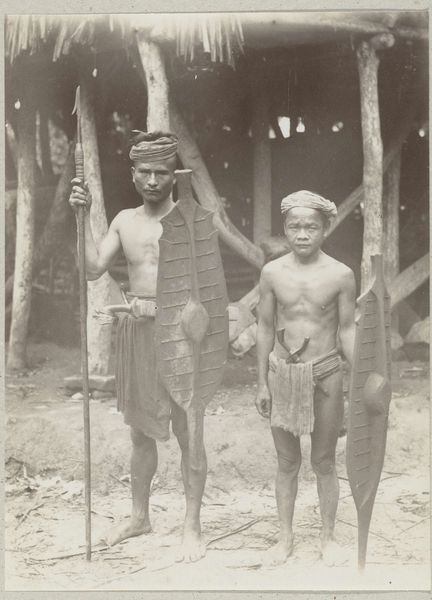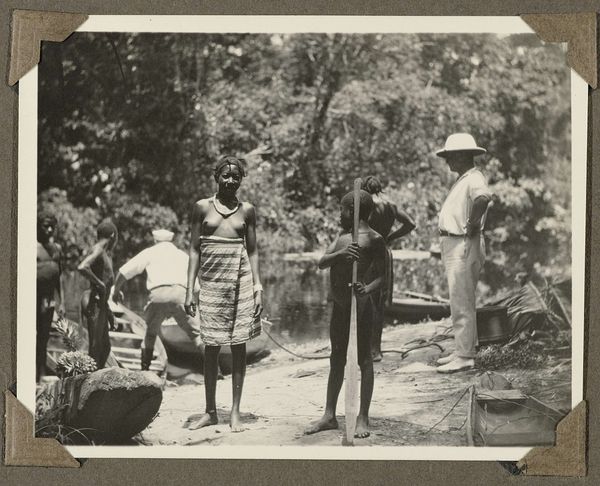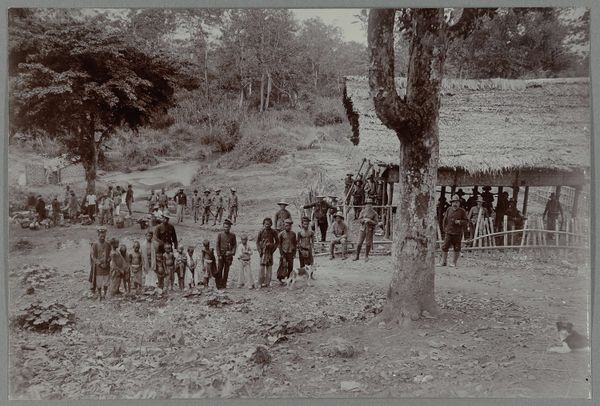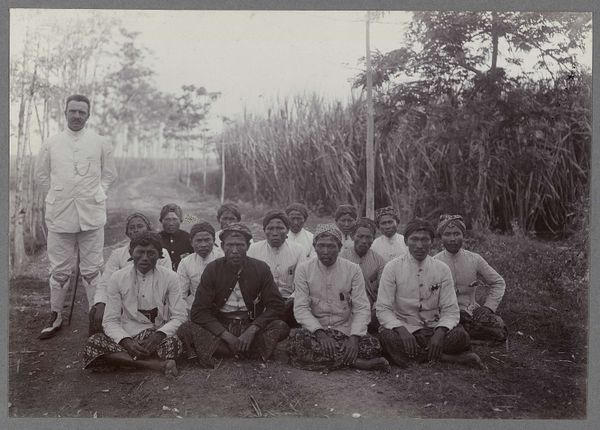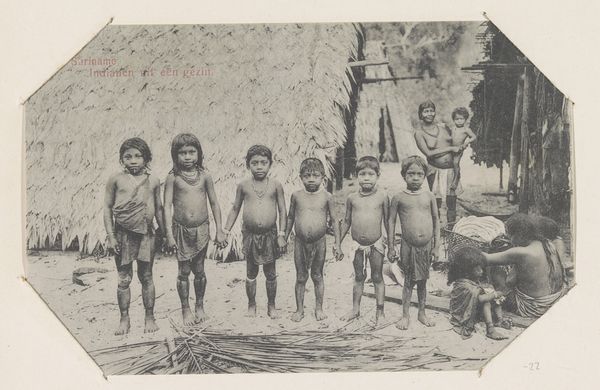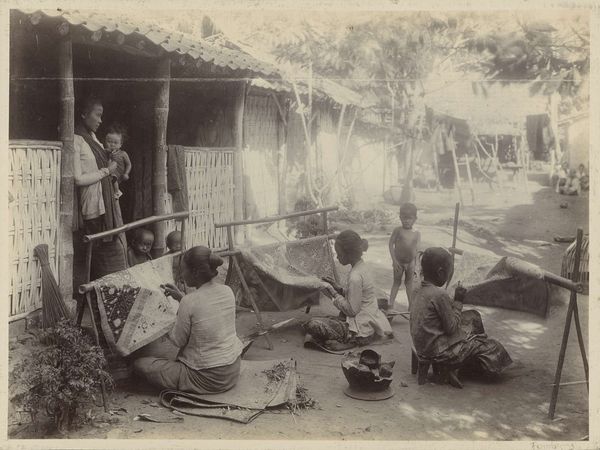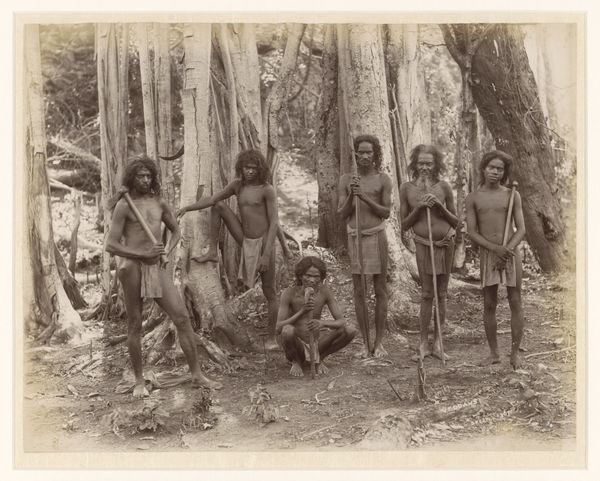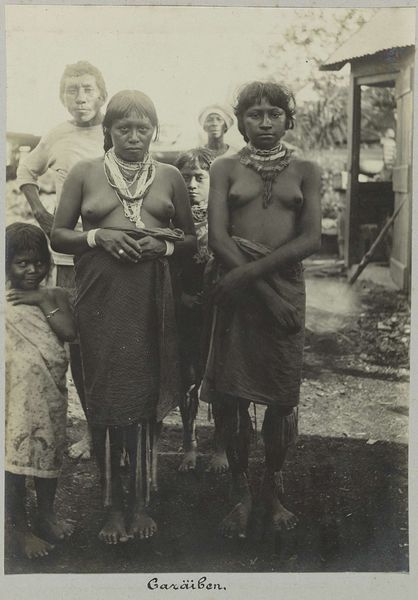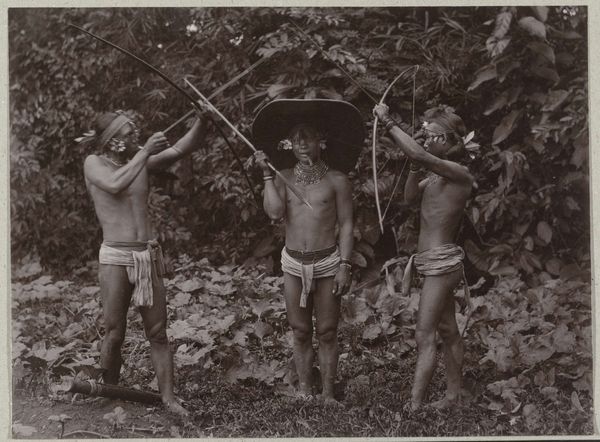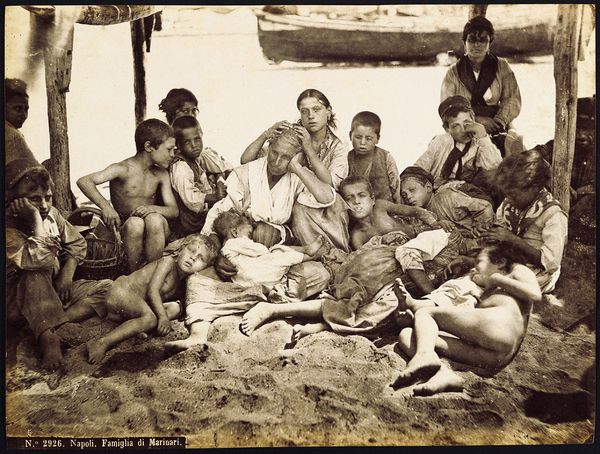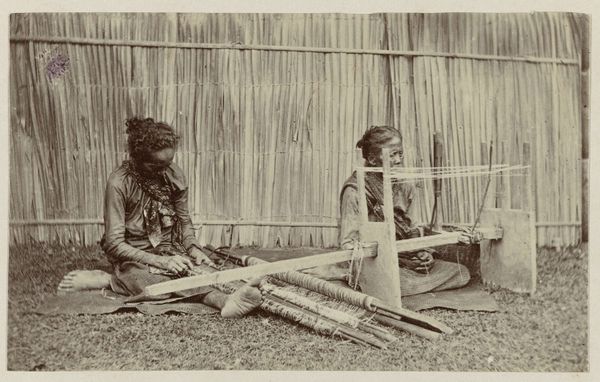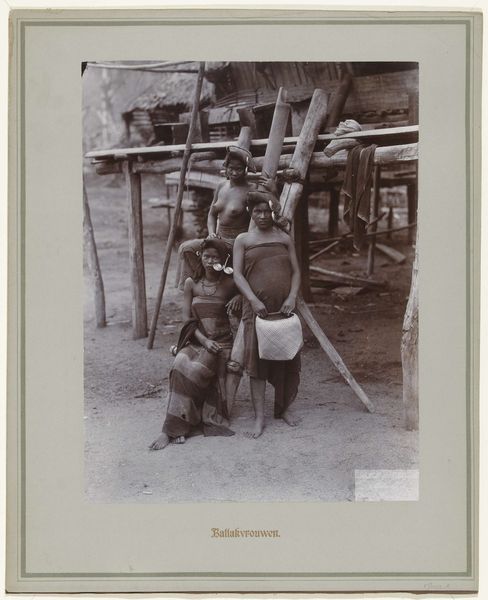
Groepsportret van onbekende bewoners van de Mentawai-eilanden 1891 - 1912
0:00
0:00
christiaanbenjaminnieuwenhuis
Rijksmuseum
gelatin-silver-print, photography, gelatin-silver-print
#
portrait
#
gelatin-silver-print
#
black and white photography
#
photography
#
black and white
#
gelatin-silver-print
Dimensions: height 165 mm, width 226 mm
Copyright: Rijks Museum: Open Domain
Editor: Here we have a gelatin silver print entitled "Groepsportret van onbekende bewoners van de Mentawai-eilanden," taken by Christiaan Benjamin Nieuwenhuis sometime between 1891 and 1912. The photo seems to show a large group posed in front of what appears to be their homes. It’s striking how directly they are looking at the camera. How do you interpret the context surrounding an image like this? Curator: Well, this image offers a complicated look into ethnographic photography. While seemingly straightforward, it's crucial to consider the power dynamics at play. Nieuwenhuis, presumably a Western photographer, is capturing a group portrait of Mentawai people. What purpose did these images serve back then? Were they scientific documentation, or something else? Editor: That's a good point. It feels less like art and more like a record, potentially tied to colonial interests. Does the museum’s choice to display it today change its meaning? Curator: Absolutely. Displaying it in a museum now inevitably reframes it. We have to grapple with the legacy of colonialism and how images like these contributed to certain understandings - or misunderstandings - of indigenous cultures. Consider the arrangement; the subjects are posed, almost arranged for the photographer. Whose gaze is privileged here, theirs or the colonizer's? Editor: So, its presence in a modern museum setting almost forces us to confront a history of exploitation and representation, rather than just passively observe it as an objective record. Curator: Precisely. And it challenges the institution itself. By showing such a work, the museum has to consider its own role in perpetuating or dismantling colonial narratives. What do we learn about these individuals versus what do we assume? It’s less about the subjects themselves, but the circumstances in which this photograph was created. Editor: It's a reminder that even documentary-style photographs carry a huge weight of historical context and power. Thanks, I never considered its presence in the gallery as part of its overall narrative. Curator: My pleasure. Analyzing how institutions shape meaning is half the battle in appreciating pieces like this one.
Comments
No comments
Be the first to comment and join the conversation on the ultimate creative platform.
